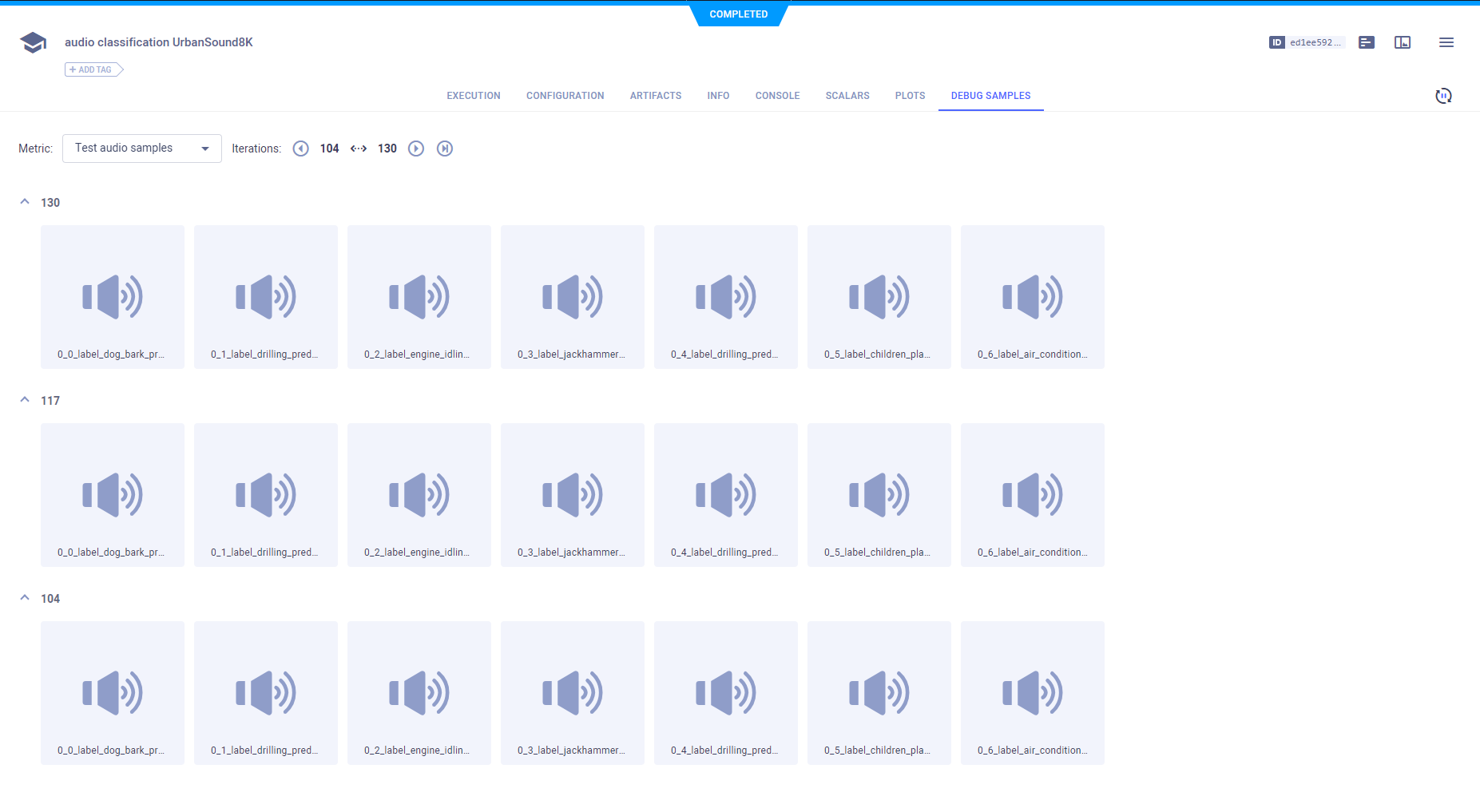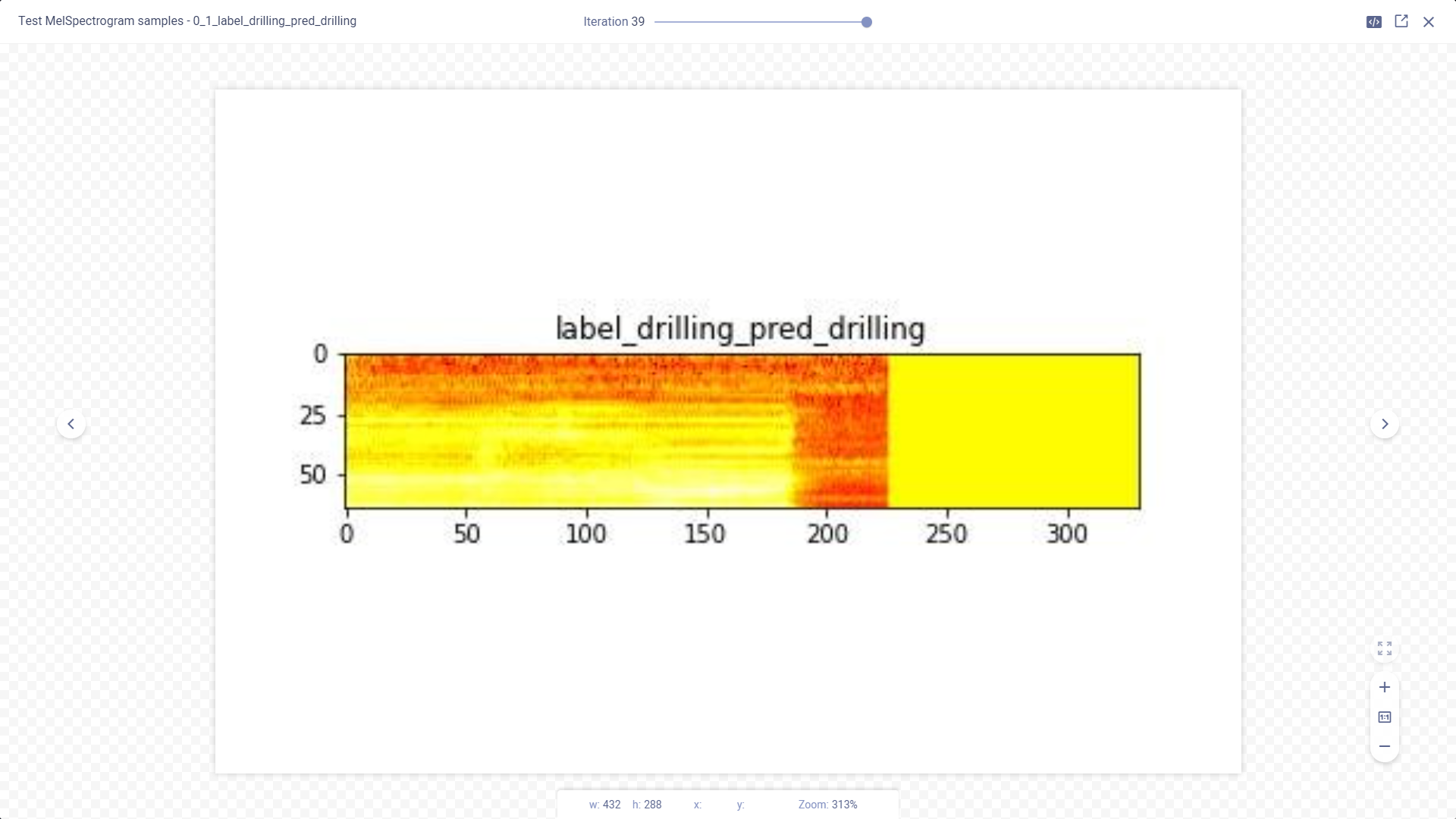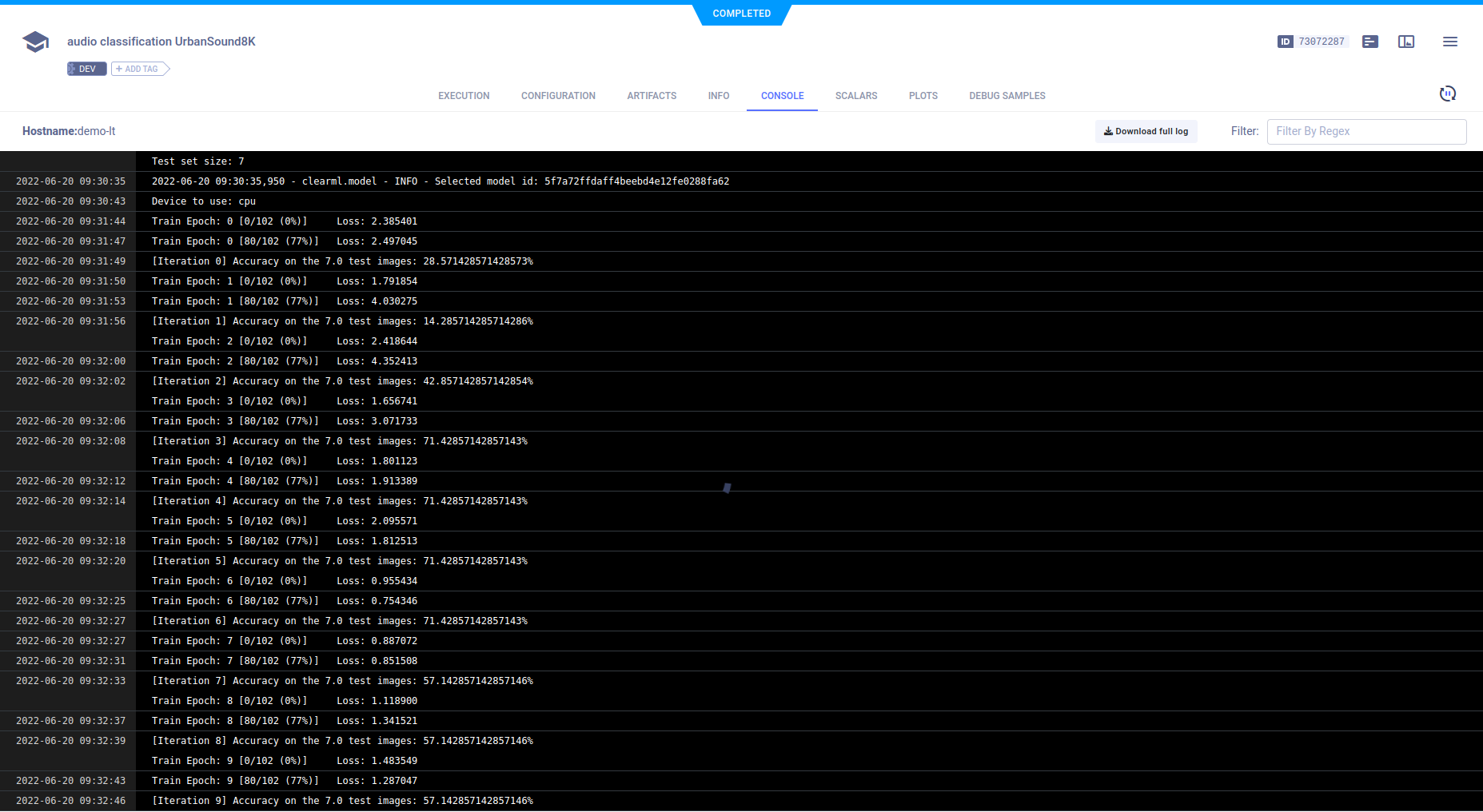Audio Classification - Jupyter Notebooks
The audio_classification_UrbanSound8K.ipynb example script demonstrates integrating ClearML into a Jupyter Notebook which uses PyTorch, TensorBoard, and TorchVision to train a neural network on the UrbanSound8K dataset for audio classification. The example calls TensorBoard methods in training and testing to report scalars, audio debug samples, and spectrogram visualizations. The spectrogram visualizations are plotted by calling Matplotlib methods. The example also demonstrates connecting parameters to a Task and logging them. When the script runs, it creates an experiment named audio classification UrbanSound8K in the Audio Example project.
Scalars
The accuracy, learning rate, and training loss scalars are automatically logged, along with the resource utilization plots (titled :monitor: machine), and appear in SCALARS.

Debug Samples
The audio samples and spectrogram plots are automatically logged and appear in DEBUG SAMPLES.
Audio Samples

By doubling clicking a thumbnail, you can play an audio sample.
Spectrogram Visualizations

By doubling clicking a thumbnail, you can view a spectrogram plot in the image viewer.

Hyperparameters
ClearML automatically logs TensorFlow Definitions. A parameter dictionary is logged by connecting it to the Task using
a call to the Task.connect method.
configuration_dict = {
'number_of_epochs': 10,
'batch_size': 4,
'dropout': 0.25,
'base_lr': 0.001
}
configuration_dict = task.connect(configuration_dict) # enabling configuration override by clearml
Parameter dictionaries appear in CONFIGURATION > HYPERPARAMETERS > General.

TensorFlow Definitions appear in the TF_DEFINE subsection.

Console
Text printed to the console for training progress, as well as all other console output, appear in CONSOLE.
